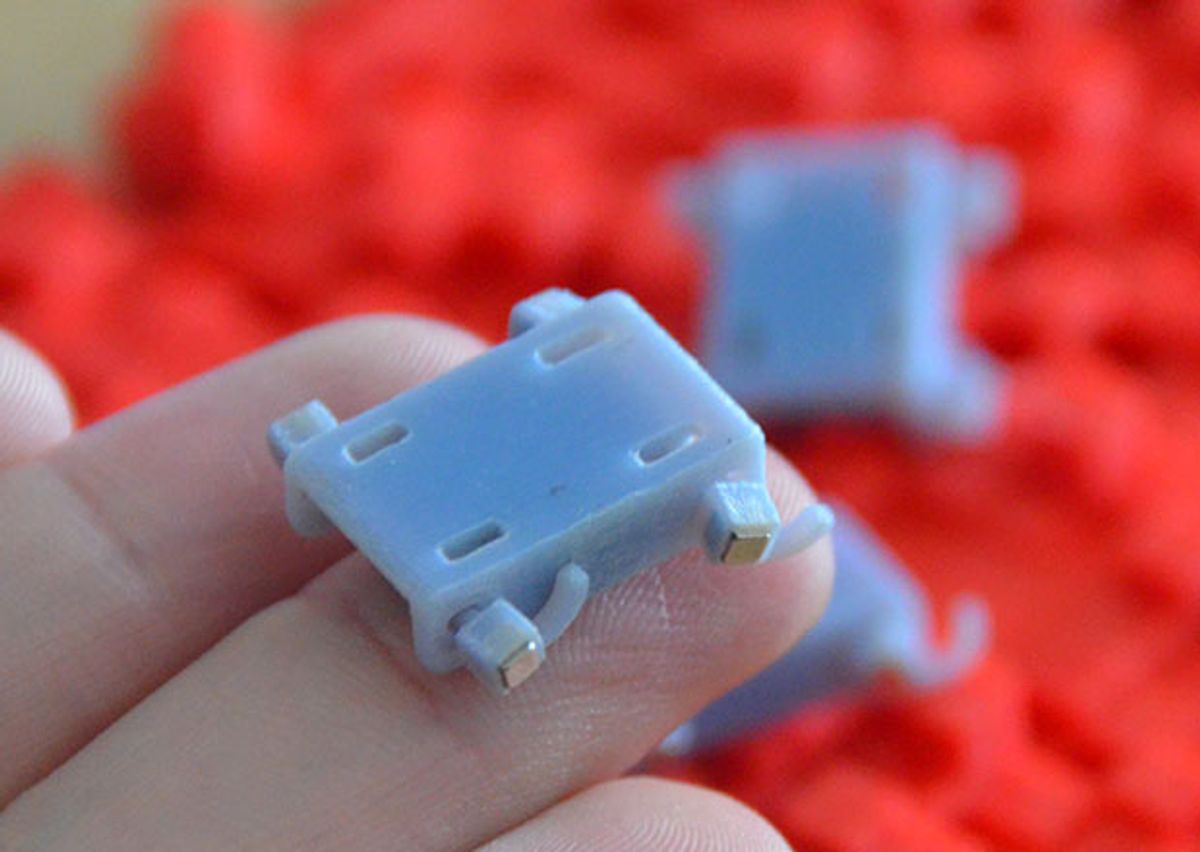The fact that most insects (except for the really freaky ones) are very small doesn’t stop them from getting everywhere they want to, especially all of those places that you try to keep them out of. Roboticists have been experimenting with bug-sized robots, but they’re still pretty large, about the size of giant beetles or moths. Most insects are far smaller than that, which means that they experience the world much differently, and that can be a hard thing to study effectively.
At ICRA last month, Ryan St. Pierre and Professor Sarah Bergbreiter from the University of Maryland presented a paper on the gait characteristics of magnetically actuated legged robots weighing less than 2 grams, which was very cool to see. It’s only the beginning, though: robots like these are about to get way, way smaller.
Coin-scale robots that weigh just a few grams have been skittering around since at least 2009, when UC Berkeley introduced its Robotic Autonomous Crawling Hexapod (RoACH), a 2.4-gram hexapedal walker. A few years layer, The Harvard Ambulatory MicroRobot (HAMR) reduced the number of legs to four and the mass to just 1.7 grams. These tiny robots are very cool, but they’re mostly designed to just exist, rather than to experimentally test small robot dynamics.
To find out what gaits work best for very small legged robots, Ryan St. Pierre originally planned to take a hexapod wheel-legged robot like RHex and just scale it way, way down. The advantage of using a design like RHex is that each leg is independently controllable, making it easy to experiment with a variety of different gaits. As it turned out, tiny RHex didn’t work that well, because the legs tended to lock together, so Ryan lopped off the middle pair, leaving a quadrupedal whegged robot. The entire thing can be 3D-printed in one go, and once the support material is removed, you just add the motors and it’s good to go.

At these sizes (each quadruped is 20 mm long, with a hip height of 5.6 mm and weight of about 1.6 gram), traditional motors and batteries aren’t going to cut it. Instead, the robot is magnetically actuated, using an externally generated magnetic field. Each of the robot’s four hips has a 2-mm neodymium cube magnet embedded into it, and when you rotate a big magnet in close proximity to the robot, the magnetic field causes those little magnets to rotate as well, spinning the robot’s legs. By changing the dipole orientation of the leg magnets in different combinations, you can cause the robot to move with different gaits, including trotting, waddling, bounding, and pronking:
On flat ground, a pronking gait actuated at 10 Hz resulted in an average top speed of about 78 mm/s, which is nearly four body-lengths per second. Pronking also proved to be the best gait for traversing mildly rough terrain, although as the terrain got rougher, other gaits performed better.
“We have learned that more dynamic gaits, where there is more pitching of the body as it locomotes, are more effective crossing over rough terrain, but are slower on flat terrain,” Ryan told us. “It was most surprising to find that there were some flight phases in some of the gaits, such as pronking. This flight phase is what helped that gait outperform other gaits over flat terrain.”
The beauty of this design is that it’s so easy to mess with different gaits, different kinds of legs, or even different structures for the robot itself (like compliant structures, for example). Using multi-material printers makes this a single step process, and you can pump out a whole bunch of these little guys all at once. And the the lower limit on size is constrained only by the materials necessary to print the robots, namely, something that can be made into a small magnet. This means that the robots have the potential to get seriously tiny:

This is a dime-sized, 100-milligram quadruped that works just like its bigger brothers, and there’s no reason not to go smaller still, Ryan says:
“It’s always a fun challenge to try to make robots as small as possible. Currently, I am working on making a robot, of the same design, that would be 2.5 mm long, an order of magnitude smaller than the ones we presented at ICRA. Smaller robots can more easily go places that later robots can’t, and having them in various sizes would increase their utility.”
“Gait Exploration of Sub-2 g Robots Using Magnetic Actuation,” by Ryan St. Pierre and Sarah Bergbreiter from the University of Maryland, was presented last month at ICRA 2016 in Stockholm, Sweden.
Evan Ackerman is a senior editor at IEEE Spectrum. Since 2007, he has written over 6,000 articles on robotics and technology. He has a degree in Martian geology and is excellent at playing bagpipes.



